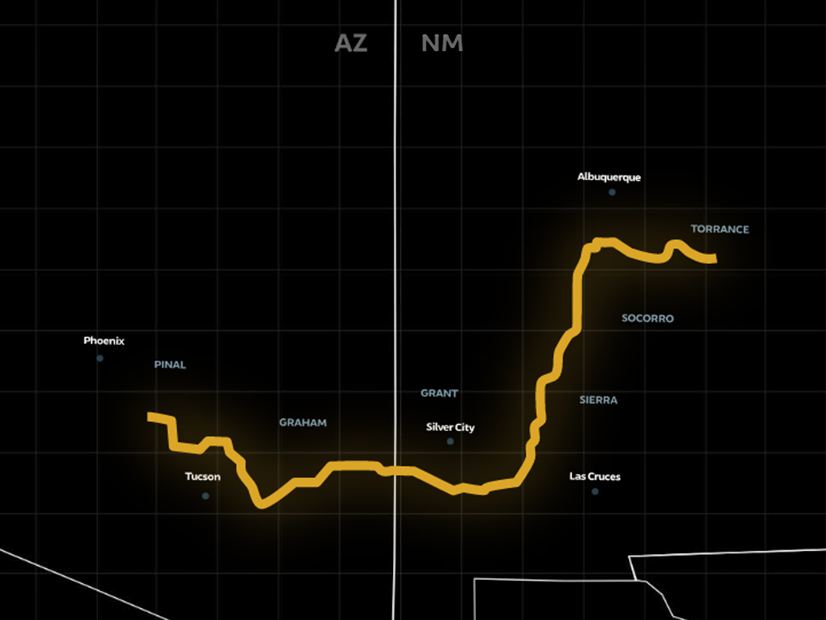
The Bureau of Land Management’s record of decision for Pattern Energy’s SunZia transmission line was also the final major approval needed for SouthWestern Power Group (SWPG)’s RioSol line, which will run next to SunZia.
The BLM record of decision, issued this month, approves an amendment to a right-of-way grant that will allow construction and operation of two transmission lines.
One of those lines is Pattern Energy’s SunZia transmission project, a 550-mile line from central New Mexico to south-central Arizona. (See SunZia Project Wins Final Approval, Signs Offtakers.)
The second line is SWPG’s RioSol line, which will generally follow the same route as SunZia.
SWPG started developing the two lines in 2006 and sold one of the lines to Pattern Energy last year. Though the two lines together were initially known as SunZia, Pattern acquired the SunZia name for the single line it purchased.
The two lines have different purposes, SWPG General Manager David Getts told RTO Insider.
The SunZia line will be a 525-kV DC line with 3,000 MW of capacity. It will carry energy from the SunZia Wind project in New Mexico to central Arizona to ultimately serve customers in Arizona and California. Getts described it as an “express line” across the 550-mile corridor.
SWPG’s RioSol line will be a 500-kV AC line with 1,500 MW of capacity. Because it is an AC line, interconnections will be easier, and SWPG envisions RioSol delivering renewable energy regionally in New Mexico and Arizona through connections to multiple substations along its route.
SWPG expects to start the process to obtain negotiated rate authority from FERC either this year or next.
And the company is aiming to start construction on RioSol in 2026, depending on progress of the SunZia line, with RioSol operations commencing in 2028. Construction of SunZia is expected to start this year, with a 2026 in-service date.
Melanie Barnes, BLM New Mexico state director, called the record of decision an “exciting milestone” for the transmission project.
“This effort represents an important step in the development of our country’s renewable energy and transmission infrastructure,” Barnes said in a statement.
According to Pattern Energy, the transmission route was originally approved in 2015. But the route was adjusted to reduce conflicts with the White Sands Missile Range. The revised route also partly parallels the Western Spirit Transmission line, minimizing environmental impacts along the segment.


